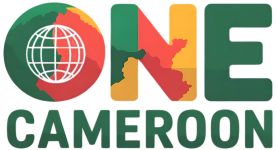Cameroon’s cultural diversity is legendary: over 250 ethnic groups inhabit its territory, and each contributes distinct rhythms, melodies, and dance forms. Music and dance remain central to communal life—marking birth, marriage, harvest, and other rites of passage. Among the most internationally recognized genres is Makossa, a fusion of duala rhythms with Latin jazz influences. The late Manu Dibango’s 1972 hit “Soul Makossa” popularized Cameroonian funk worldwide, but the genre’s roots trace back to coastal fishing villages, where fishermen’s chants over percussive pulses evolved into dancehall anthems.
Further inland, the Beti-Pahuin people developed Bikutsi (“beat the earth”), a dynamic drumming style featuring xylophones (balafons), double-headed drums, and call-and-response singing. In traditional Bikutsi ceremonies, women dancers create intricate footwork on wooden platforms, their movements mimicking the ancestral spirits. Modern Bikutsi bands, however, incorporate electric guitars and synthesizers, producing hybrid sounds that fill nightclubs and radio waves alike.
Along the northwest highlands, the Grassfields kingdoms—Bamileke, Bamoun, and others—maintain choral polyphony and horn-trumpet ensembles known as “ngeng,” which accompany royal ceremonies. Intricately beaded masks, worn by dancers, symbolize ancestral guardians. Visitors to Bafoussam during the annual Ngouon Festival witness these masked performances: dancers emerge from forested trails to enact mythical hunts, their elaborate headdresses resembling forest spirits. Music accompanies every movement—drums, flutes, and oboe-like instruments called “mvet” create haunting melodies that echo across the hills.
In the north, among the Fulani (Peul) pastoralists, the hoddu (lute) and calabash (gourd percussion) accompany festival songs praising cattle. Herdsmen perform graceful Sahelian dances at weddings, their slender bodies moving in circular formations. During the annual Gerewol festival—celebrated by the Wodaabe Fulani—young men adorn themselves with face paint and elaborate wigs, performing a courtship dance known as “Yaake.” Judges evaluate male contestants on beauty and poise; the top performers win eligible brides in elaborate matchmaking ceremonies.
Cameroon’s mobile DJs, known colloquially as “DJ Joss,” can be found at neighborhood parties, weddings, and beach gatherings. They blend Afrobeat, Congolese rumba, and local Makossa tracks, ensuring dance floors remain packed until dawn. Meanwhile, rising hip-hop artists infuse rap with sub-Saharan vernacular languages—Duala, Ewondo, Bamileke—creating a new wave of “Afro-rap” that resonates with urban youth.
Music schools in Douala and Yaoundé teach classical piano and violin alongside traditional instruments: drumming ensembles offer classes to children eager to preserve ancestral legacies. Universities host annual competitions, awarding scholarships to promising talents. Traditional masters sometimes partner with contemporary producers, resulting in crossover albums that highlight Cameroon’s rich sonic heritage.
Whether you visit a coastal beach party where Makossa rules the night or trek to a remote village to witness masked Bikutsi ceremonies, Cameroon’s musical landscape offers endless exploration. Every beat and melody reflects centuries of intercultural exchange—Bantu, Arab, European, and indigenous influences melding into a unique cultural mosaic. As you tap your foot to driving percussion, you become part of a living tradition that continues to evolve, shape identities, and celebrate life’s milestones.









